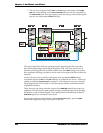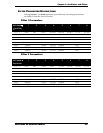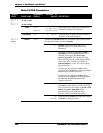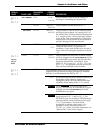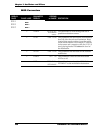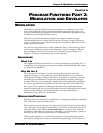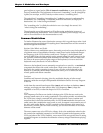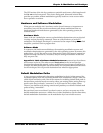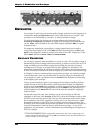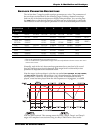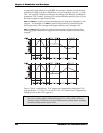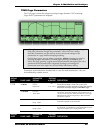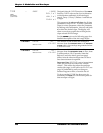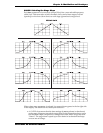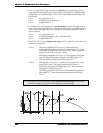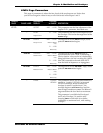
Chapter 6: Modulation and Envelopes
134 ANDROMEDA A6 REFERENCE MANUAL
ENVELOPES
An envelope is used when you want to make changes in the level or the frequency of
a destination over a period of time which can be mere fractions of a second – .001
seconds (or one thousandth of a second) – to several minutes or longer.
For level modulation, the changes an envelope makes to the destination is by
modifying its amplitude (its amount or signal level) during a time period that you
can set.
ENV 3, which defaults to the A6’s audio output amplitude (AMP), is a good
example of this.*
For frequency modulation, an envelope’s varying output levels can be used to
change the current pitch of the VCOs (
ENV 1 defaults to the frequency of OSC 1 and
OSC 2) or the Program’s harmonic content, also referred to as the “frequency” of the
filters (
ENV 2 defaults to FILTER 1 FREQ and FILTER 2 FREQ).
ENVELOPE PROPERTIES
An envelope’s output is often described as a contour or shape. The envelope’s shape is
determined by its level settings and time it takes to go from one level to the next. The
rising and falling of an envelope’s output levels during the time the envelope is
running forms a “shape” so to speak which is then applied to a destination. The
destination modulated by the envelope conforms to this shape: the envelope instructs
it when to increase or decrease in level or frequency, by how much and for how long.
In Chapter 3 when we introduced the concept of the envelope, we used the example
of sound dynamics when we described how an envelope shapes its destination. In
our example, we used a synthesized sound’s loudness (the destination) as the thing
to be shaped by the envelope.
Using a sound’s loudness again as our example, the envelope controlling it takes a
certain amount of time for the sound to achieve maximum volume (or amplitude,
which is set in the
ATTACK time parameter), a certain amount of time for the sound to
begin its initial fade (decreasing amplitude, set in the
DECAY 1 time parameter) to a
second loudness level (
DECAY 2 level) and so forth until the sound has completely
faded to silence.
On the other hand, the very same envelope can be used to shape an LFO: the
amplitude in this case is the intensity of the LFO, where the envelope is used to fade
the LFO in and out of the sound. Also, the very same envelope can be used to shape
the waveforms in the VCOs: applied to a pulse wave, it can vary the wave’s width
from wide to narrow or narrow to wide, providing some interesting textures. The
flexibility of the A6 becomes obvious when you know you can route an envelope to a
long list of destinations. And also keep in mind that an envelope – or any of its
parameters, for that matter – can be a destination: try modulating an envelope by an
LFO, for example.
_________________________
* Please note that ENV 3 is hardwired (physically connected) to the voice’s output stage and
cannot be disconnected. While you can use
ENV 3 to modulate many other destinations, it is
always routed to its voice’s output.



